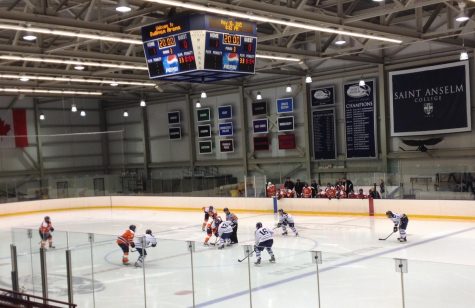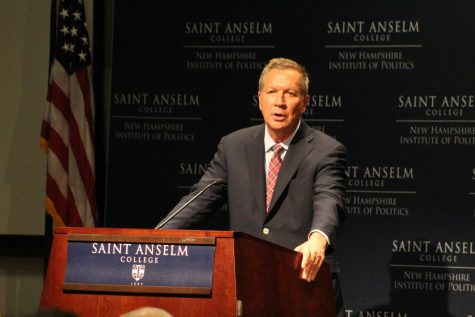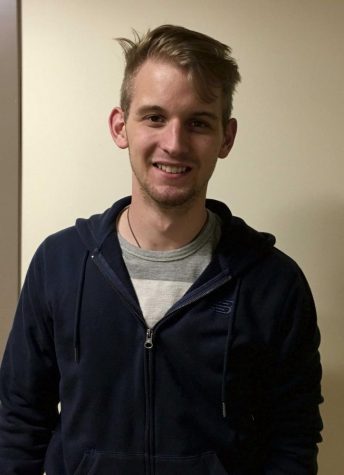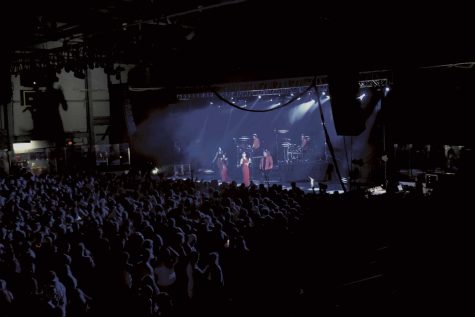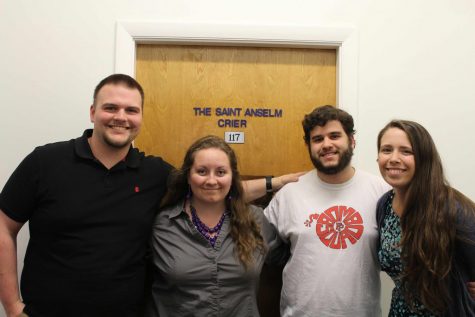Students debate Trump’s war on the media
March 15, 2017
The topic at the third annual MLK Debate, hosted by the Multicultural Center and the Saint Anselm College Debate Team, was, “Resolved: President Trump’s war on the media is justified.” Four members of the Saint Anselm College Debate Team took part in the debate.
Freshman Alexandros Pandazis (author of this article) and sophomore Drew Collins argued in affirmation of the resolution while senior Rebecca Pelletier and sophomore Gregory Valcourt argued against it.
The primary goal of the debate was to showcase a dialogue over a civil rights issue in honor of Martin Luther King, Jr.
The debate was held on Feb. 23 in Perini Lecture Hall, was yet another event in the month long series Saint Anselm College dedicated to honoring Dr. Martin Luther King Jr. Originally scheduled to be held two weeks prior, the college’s closure on Thursday, Feb. 9 caused the coordinators to postpone the event until the end of the month.
According to Wayne Currie, director of the Multicultural Center, the debate was the second highest attended event in the series, with over 40 students and staff in attendance.
In debating whether or not President Trump’s war against the media is justified, the debaters avoided discussion on whether or not his presidency, campaign, or any other facets of his political agenda/style are vindicated primarily because this was not the topic of the debate.
The main arguments made by the affirmative side were that Trump has a right to “check” the media if it is not doing its job and attempted to prove this by showing that the media is biased.
Pandazis and Collins emphasized that Trump goes at all media outlets if he believes they are wrong, not simply the ones that are perceived to be more liberal. In addition, the duo argued that Trump was elected to lead the country with the voice and ideas he made heard in his campaign and it is his right and duty to continue with that agenda regardless of the fact that he is now a representative of all Americans.
They also argued that the media does have a right to correct Trump when he makes inaccuracies but cited studies showing that his inaccuracies are not much different from his predecessors.
In response, Pelletier and Valcourt leaned on arguments that showed that the media is not biased and that the first amendment warrants the freedom of the press, regardless of how the president feels about what/how the press is reporting.
The pair also argued that the solution to bias in the media is to offer a wide variety of voices in the media, something they claimed is currently present, and to allow the public to choose which voices they want to follow.
In addition, the pair argued that Trump’s administration has been following a “disinformation doctrine” and that it is cultivating a culture of hate in America.
There were many attempts from both sides to turn their opponents’ arguments against them. In one case, the affirmation attempted to show that it is actually the mainstream media which is cultivating a culture of hate in the United States.
Ultimately however, it was left up to each individual audience member to decide for themselves which side was right.
The debate team’s goal was to showcase what it does as a team, and despite the fact that only four faces took part in the debate, nearly every member of the team was involved in doing research and assisting with arguments for both sides.
Response from faculty and students alike was extremely positive with nearly all that were interviewed communicating positive feedback, particularly noting the relevancy of the topic. One sophomore said, “I’d love to see more of these throughout the year. I learned a lot and they’re very fun to watch.”
The format of the debate was an adaptation of multiple styles of debate that can be found at the collegiate level. As the debate team’s coach David Trumble explained, “The format of this debate is meant to appeal to a ‘lay’ audience. Meaning that anyone, regardless of their experience in debate, can follow along with the arguments of both sides.”
For this purpose, the debate was labeled a “public debate”, a category not found in the college debate circuit. The format consisted of a six-minute constructive speech offered by the affirmative, which outlined the argument they would be presenting. Following this, the negation had the opportunity to cross examine the opening speaker for two minutes, asking questions to better understand the affirmative’s argument and prepare rebuttals.
In the end, the debate lasted no longer than an hour, yet both sides found a way to pack their speeches with a plethora of arguments.
Four members of the Saint Anselm College Debate Team will travel to nationals at the end of the semester to finish off this year’s season.




